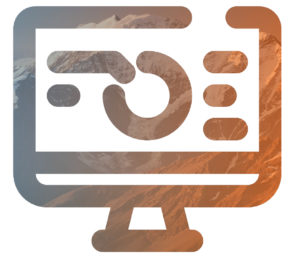Save Time & Reduce Costs: Create Translation-Friendly Files for DTP
What is DTP?
DTP stands for “Desktop Publishing.” A personal computer and specific applications are used to prepare the layout of a document. This creates better control of illustrations, margins and justifications, typefaces, graphics, colors, etc. Multilingual DTP is particularly challenging, as many languages can expand as much as 30% compared to English source files. Other languages flow right to left, which pose added challenges. To make sure your source and target language documents look the same, you need an expert team to deliver content that fits and flows properly.What is a Source File?
In the translation industry, the term “source file” refers to the original document to be translated. “Source files” come in various formats, the most common of which are listed below. .doc/.docx Microsoft Word .xls/.xlsx Microsoft Excel .ppt/.pptx Microsoft PowerPoint .indd Adobe InDesign .ai Adobe Illustrator .pub Microsoft Publisher .psd Adobe Photoshop .dwg AutoCAD .fltar/.flprj/.fltoc/.flskn/.flvar MadCap FlareHow to Create “Translation-Friendly” Source Files.
- Avoid formatting shortcuts, such as inserting manual line breaks or tabs to align. Use your software’s word processing tools to create automatic tabs, margins and automatic bulleted lists.
- Leave enough room for the translation, especially for Russian, German and Spanish. Remember that your translation may expand as much as 30%.
- Avoid excessive styling of your text (italics, bolding, underlining). Depending on your target translation language, such styles may not carry over well. For example, Asian languages don’t generally use italics, because this distorts the characters.
- If you outsource your content creation, we recommend sharing this information with your design and content management teams.
Follow These Steps for Quoting Documents That Require DTP.
- Send “editable source files/art files.” This means no PDF files. Send the files your PDF was created from, e.g. an InDesign (.indd/.idml) file instead of a PDF file.
- If you don’t have the source art files at the time of the quote, we will analyze the PDF document. Please note that prices may be subject to change once we receive the actual art files.
- Include all images, links and fonts associated with the creation of the document.
When are Additional Costs Incurred?
Recreating the layout and format of your translated document, or any images in the absence of editable source files will result in file formatting/file preparation fees. We recommend that you try to locate the original source files, but we understand that this isn’t always possible. We are here as your partner to work out agreeable solutions.The Translation/DTP Process.
- Once Trustpoint receives all relevant files, they are prepped and sent out for for translation.
- Once translation is finalized, any client review of the translation transpires before the DTP begins.
- Files are translated and proofed for correctness and accuracy, then enter the DTP phase.
- Our DTP team works with the translation in the appropriate design software, tweaking the formatting as necessary to accommodate the translated text.
- Once completed, the translation heads to quality control, where the translator and our quality control specialists review it in its final format to ensure all errors and formatting issues are resolved.
- After the translation is checked by our quality control specialists, it is finalized by DTP.
- Trustpoint then provides you the following deliverables: the translated art file, all links (including those modified for translation), and all links (including those modified for translation) and all fonts.
Click for a quote. We will be in touch to discuss your requirements and solution options. To set up a call to further discuss your needs or additional information, please send an email to info@translate.one


